The Other Side of Paris
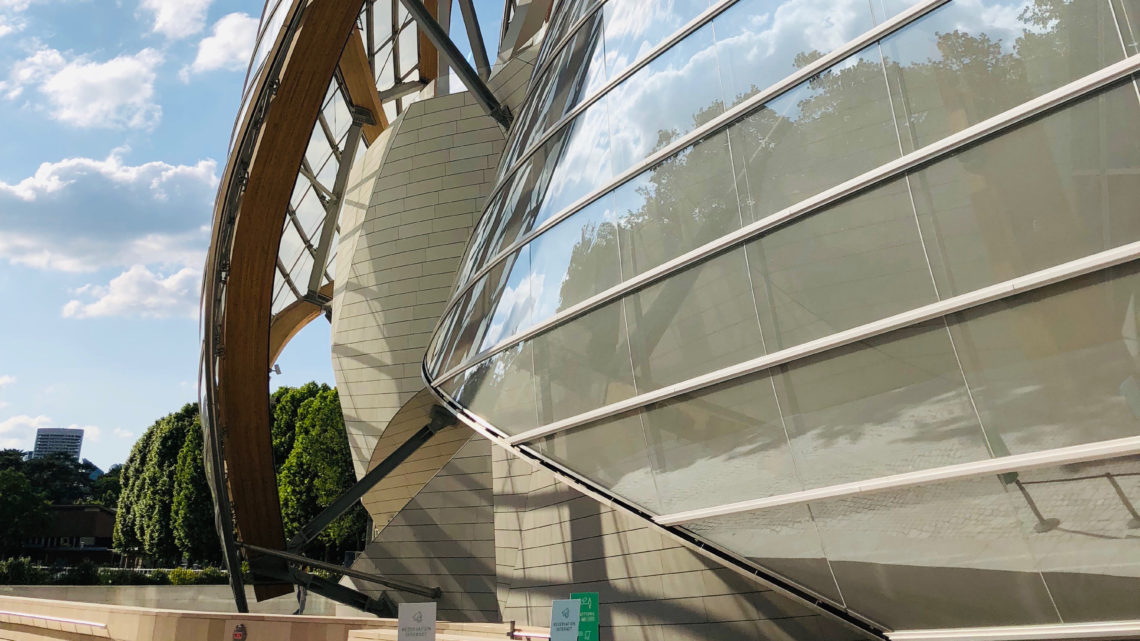
Paris is a city that I somehow always end up visiting when I travel to Europe. It was the very first city that I visited overseas when I went with my family back in 2012 before I started college. This trip was a huge eye-opener for me, as I was exposed to many beautiful architectural sites, including Notre Dame, the Arc de Triomphe, and the Louvre.
I returned again a year later as part of my study abroad tour around Europe. On this trip, I re-explored many of the city’s famous sites and saw new places as well, including the French Panthéon, the Place des Vosges, Montmartre, and La Défense. Five years later, I once again revisited Paris during a layover on my way back from Greece. Although the French capital has been my most frequented destination in Europe, I always seem to discover new things each and every time I visit.
I arrived at Orly Airport from Santorini on a Transavia flight, excited to explore the city once again. This time, I planned to visit some buildings that I did not get to see on my past trips. I went from the airport to Belleville in Paris’s 20th arrondissement, where I had found a hostel. Although this neighborhood is on the outskirts of the city, it was more affordable to stay here than in many other districts.
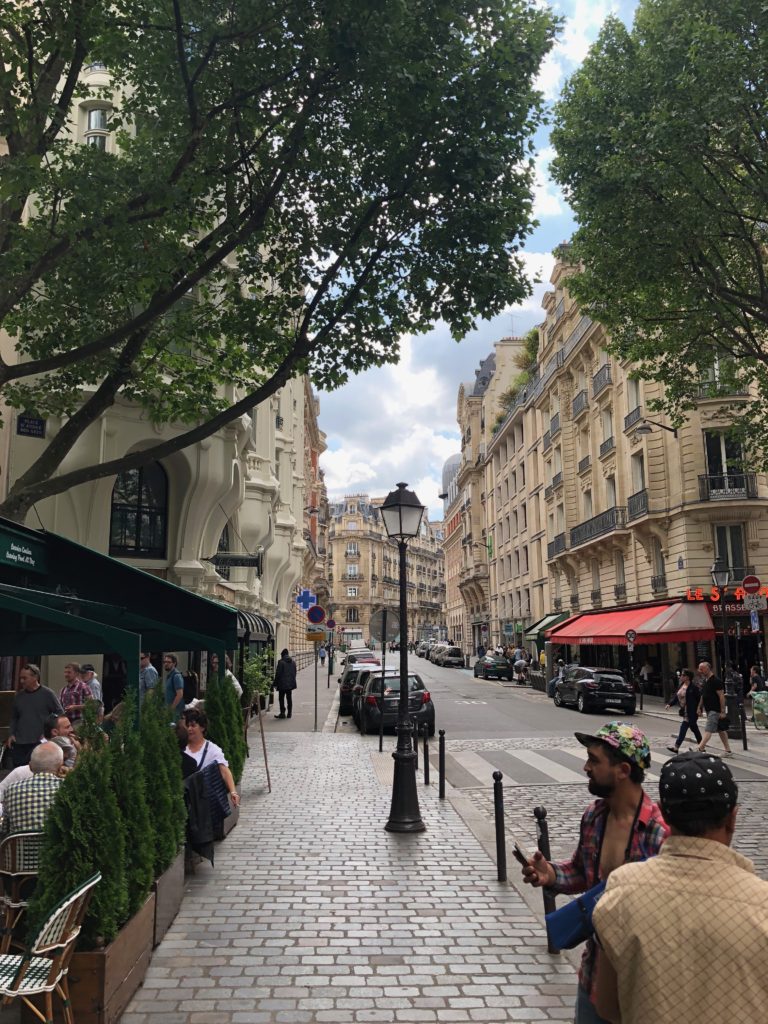
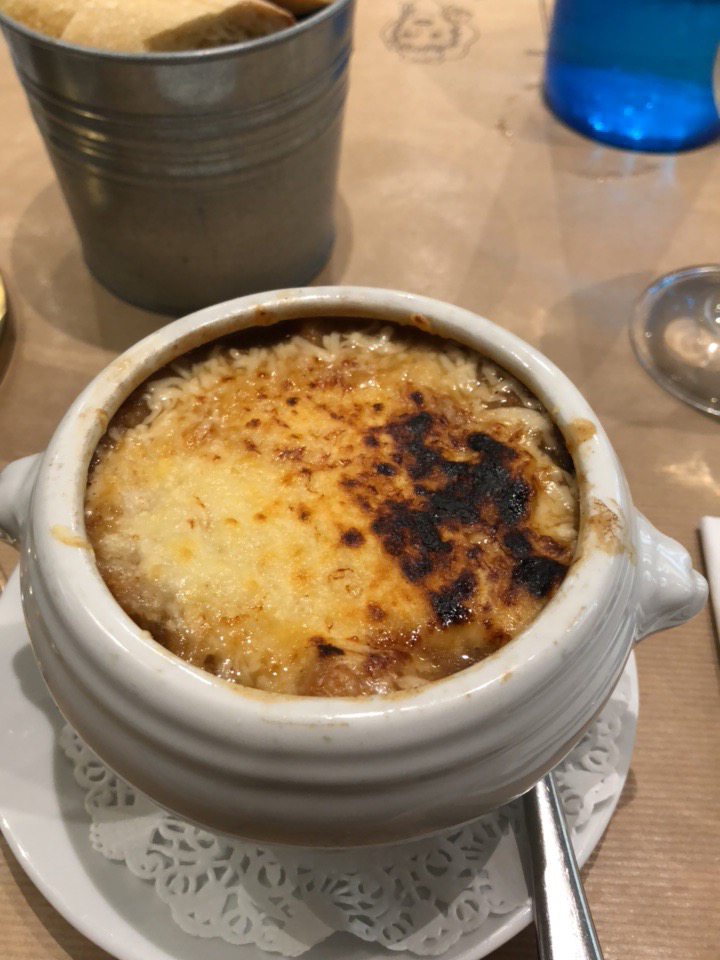
After checking in, I got back on the metro towards the city center. One of my favorite foods in Paris is French onion soup. My friend recommended a restaurant called “La Jacobine,” which she said had the best onion soup in the city. I knew I had to give it a try, and it certainly lived up to its reputation! The cheese was slightly crispy, and the soup had the perfect complexion of bread and onion flavor.
Louis Vuitton Foundation
Since this was my third time in Paris, I had already explored nearly all of the major tourist attractions. However, I had not yet seen some famous modern buildings that I studied in my contemporary architecture history class. I headed over to the 16th arrondissement to visit one of these buildings.
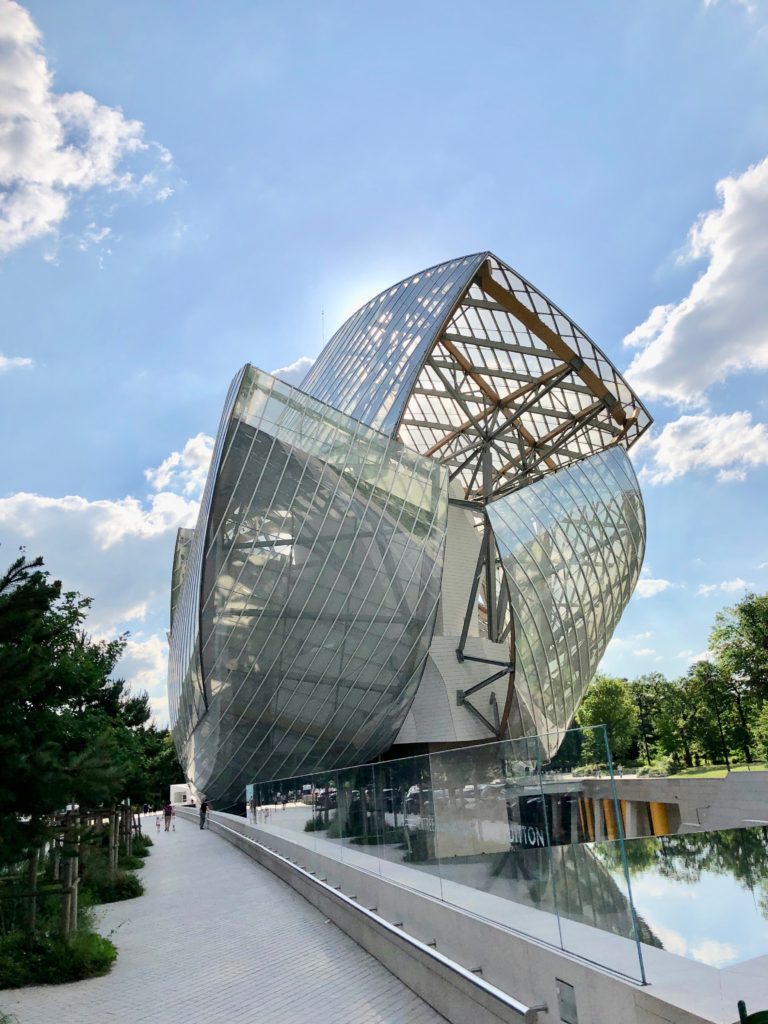
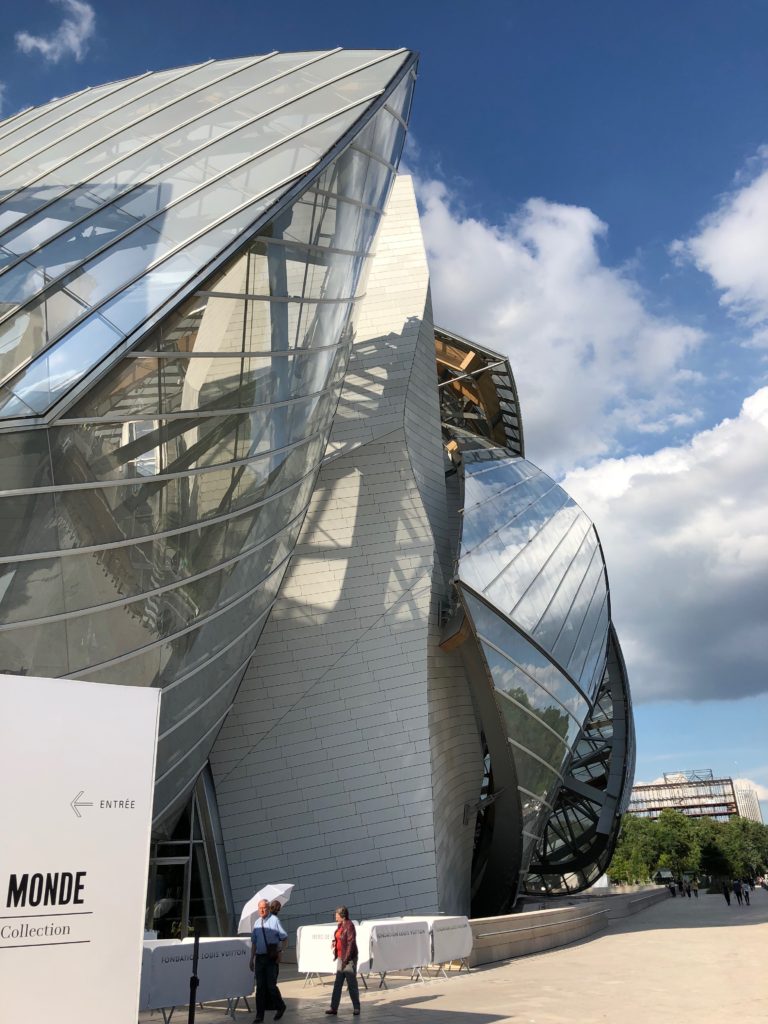
The Louis Vuitton Foundation was designed by my favorite architect: Frank Gehry! Construction started in 2008 but the museum did not open until 2014. This organic and fluidic building is a fine example of the modern architectural movement known as deconstructivism. The architects who design these buildings think outside the box, bridging the gap between architecture and sculpture with an eclectic use of materials in different shapes.
Frank Gehry has always stood out as my favorite architect because of his ability to “make the impossible possible.” He will create an organic sketch that, at first glance, looks like a bunch of squiggly lines. He will then turn that sketch into a structure that one can actually experience. I have always had fun exploring his buildings. For the Louis Vuitton Foundation, Ghery was inspired by the Grand Palais and other glass garden pavilions. He aimed to create a museum that invited guests inside while bringing a new sense of life into the surrounding park.
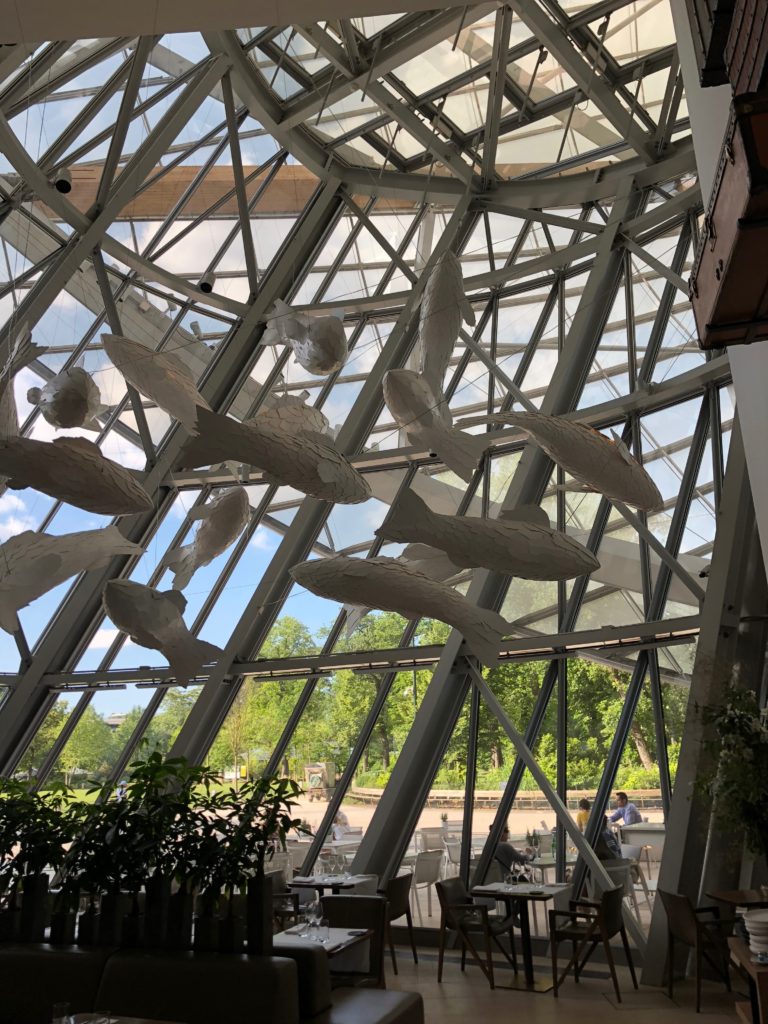
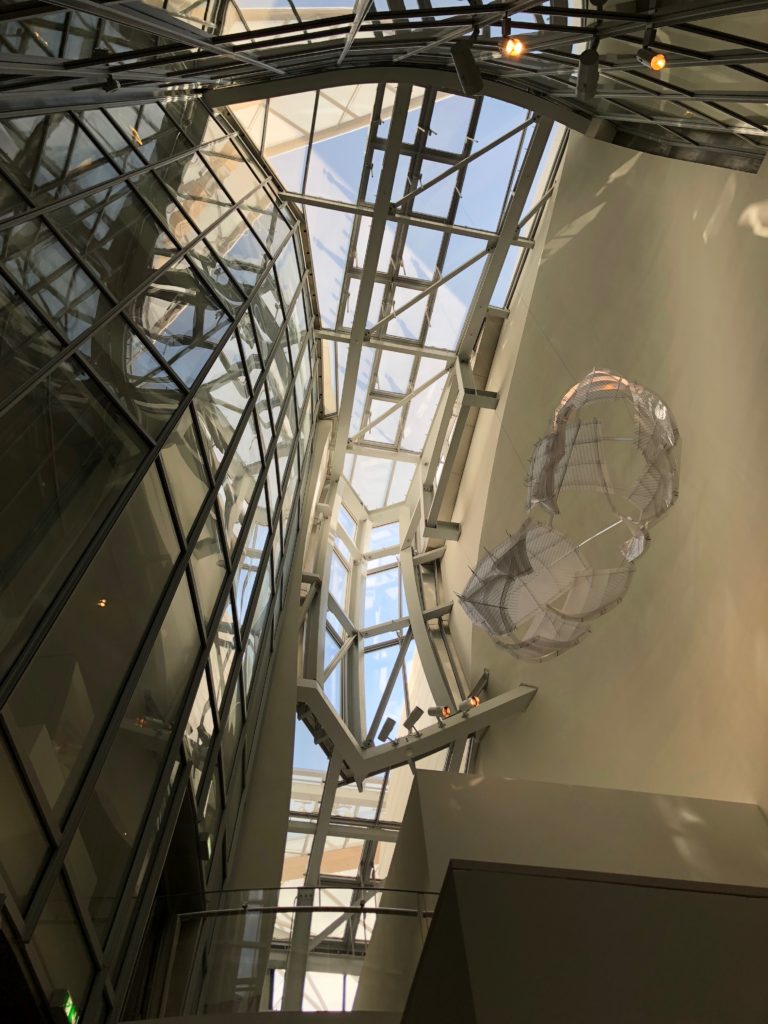
I visited the museum in the evening and did not have to wait in line to enter. Inside, I walked into a large glass atrium, where the building’s concrete masses and glass walls converge into an open space with no right angles. The atrium contains the building’s elevators as well as angled staircases that lead up to the museum’s various mezzanines.
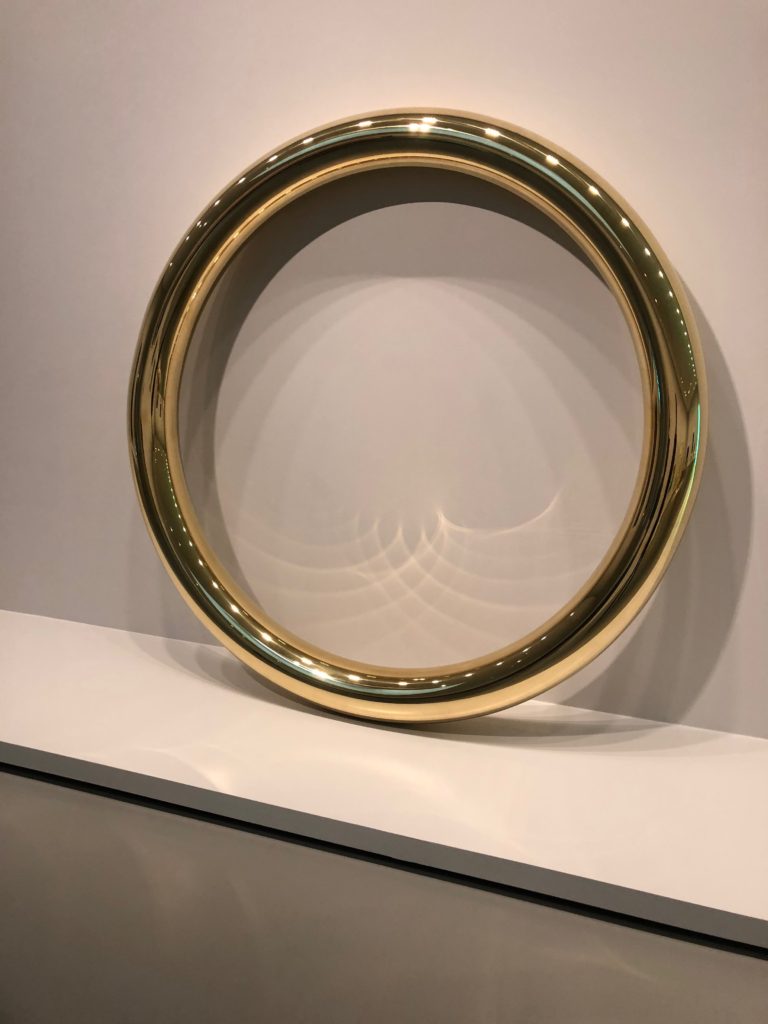
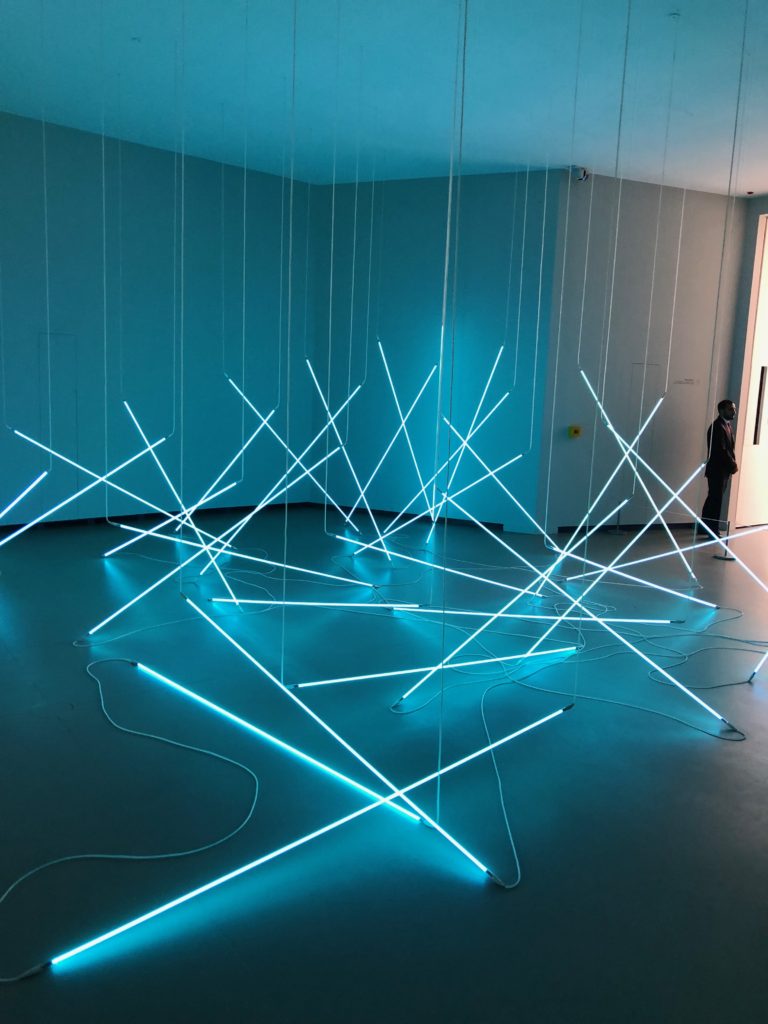
The mezzanines contain the main art galleries, which are surprisingly regular in shape. Much like the Tate Modern in London, this is a contemporary art museum that features all kinds of displays, from large golden rings to neon lights.
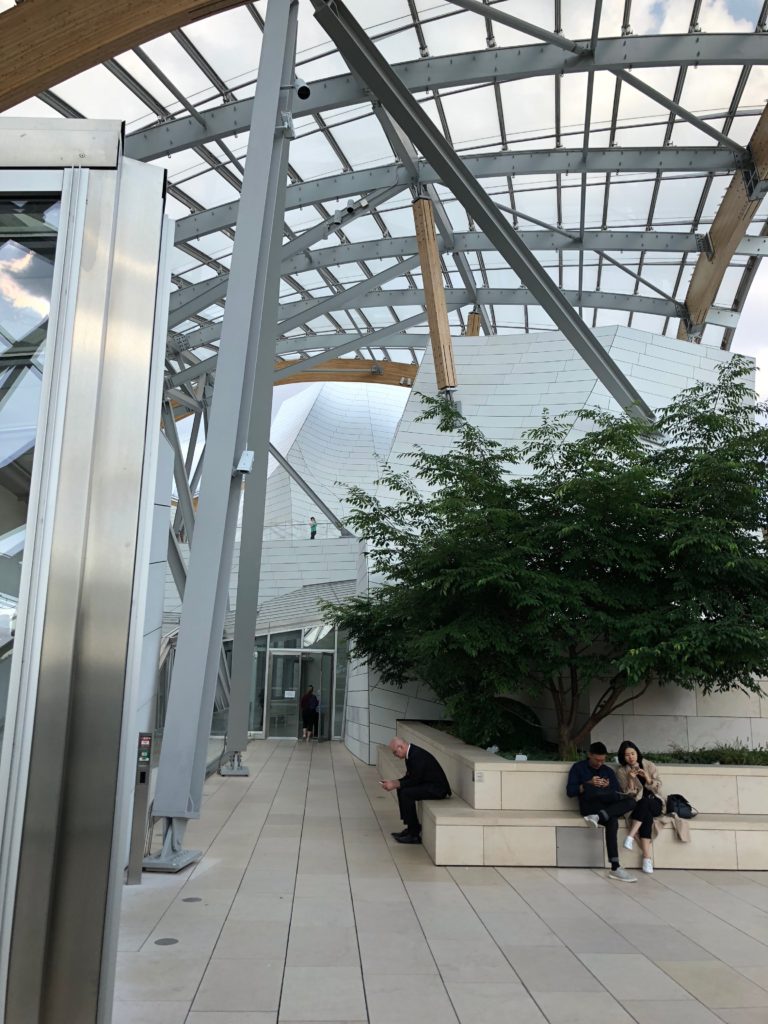
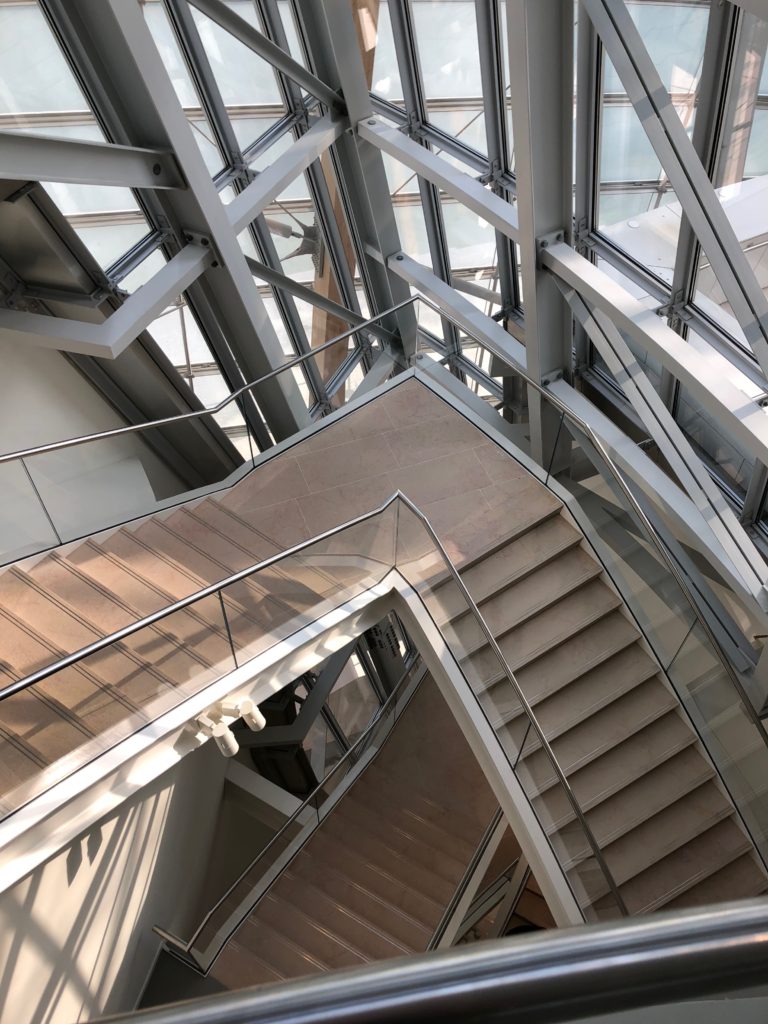
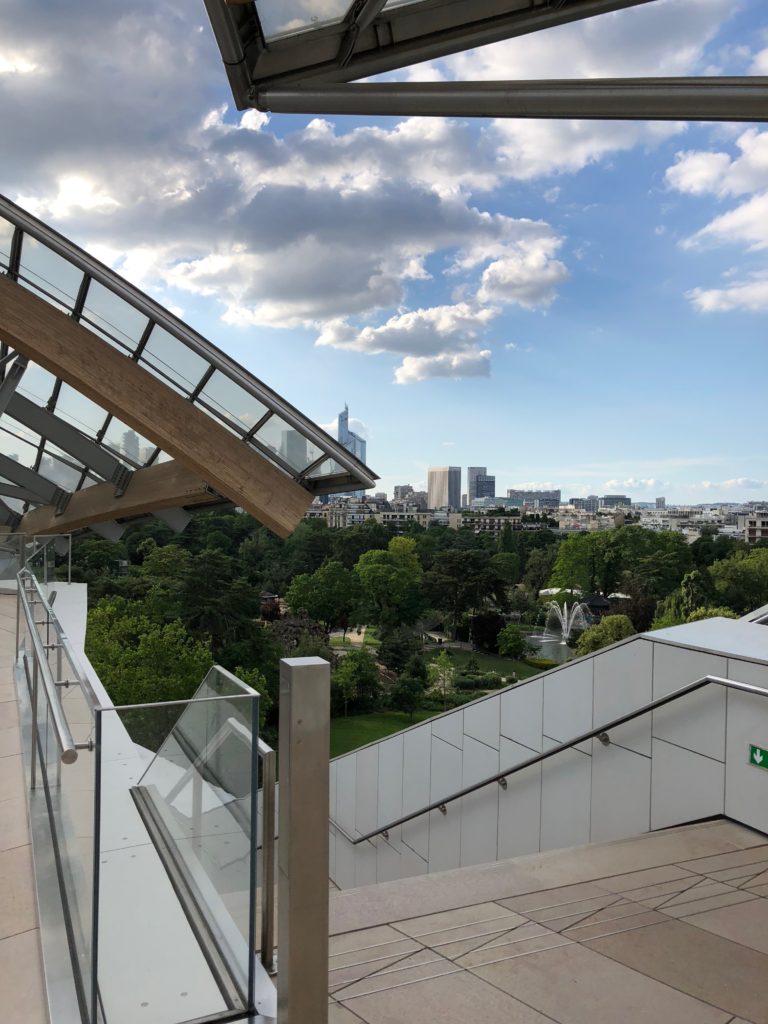
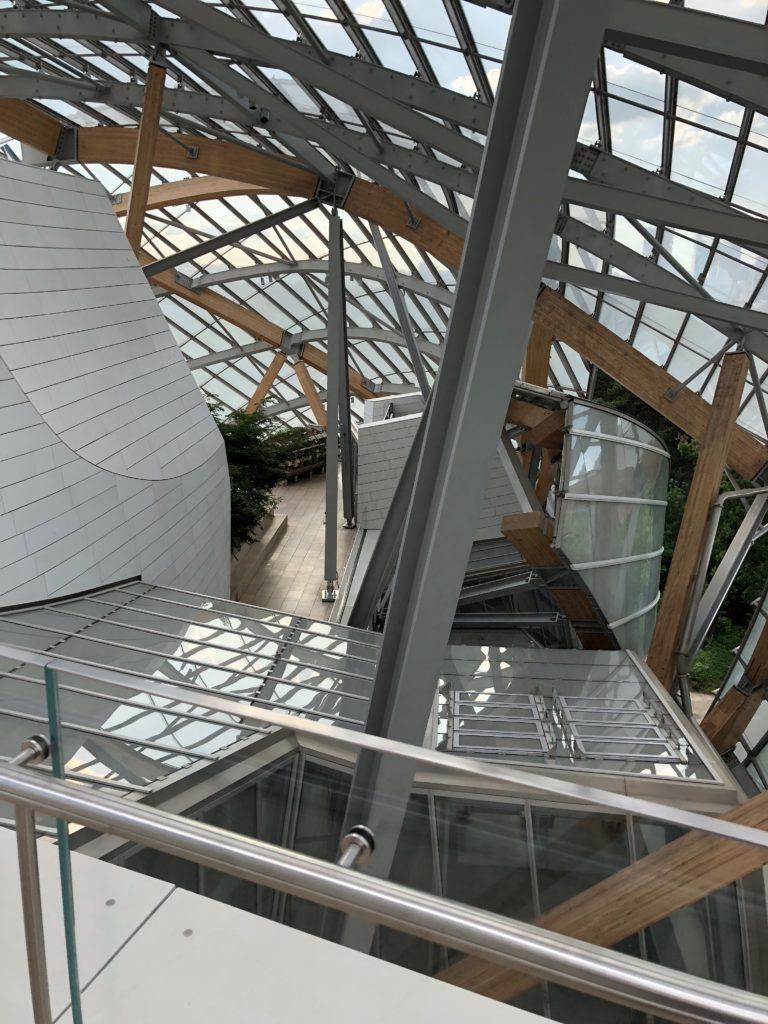
The top level of the building contains several roof terraces. From here, I got a commanding view of the surrounding park and La Défense in the background. Gehry blends the indoors and outdoors with this space. White concrete panels clad the main exterior walls of the upper levels, while the glass outer shell transitions from being a window wall for the interior spaces to a canopy for the terrace.
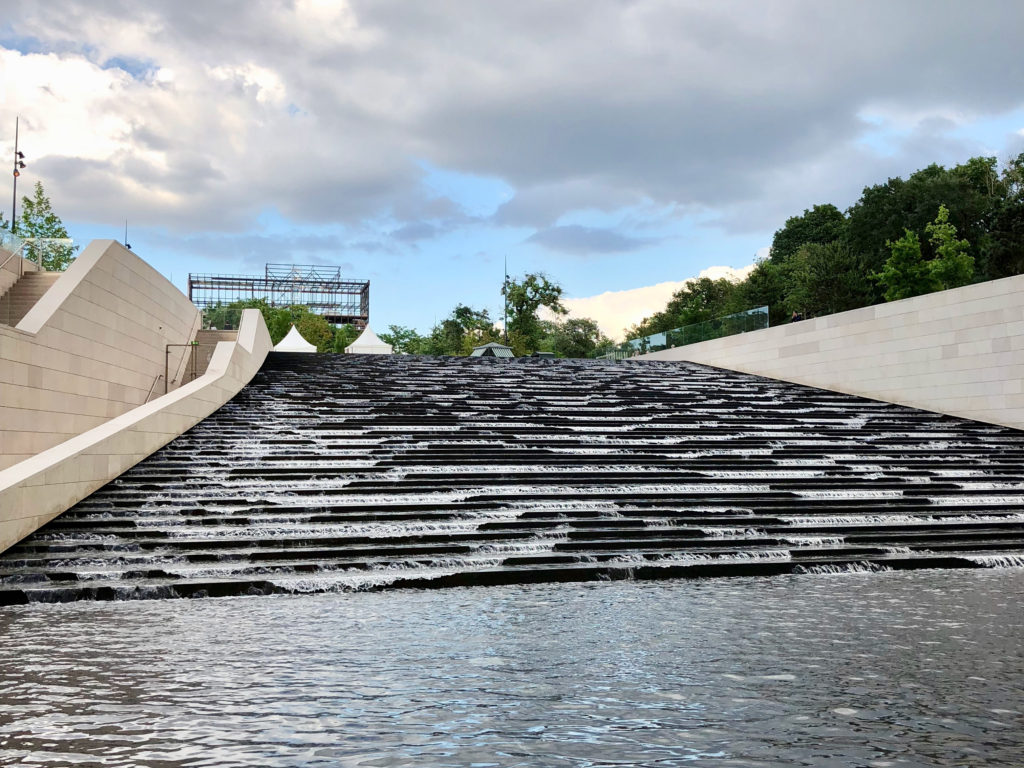
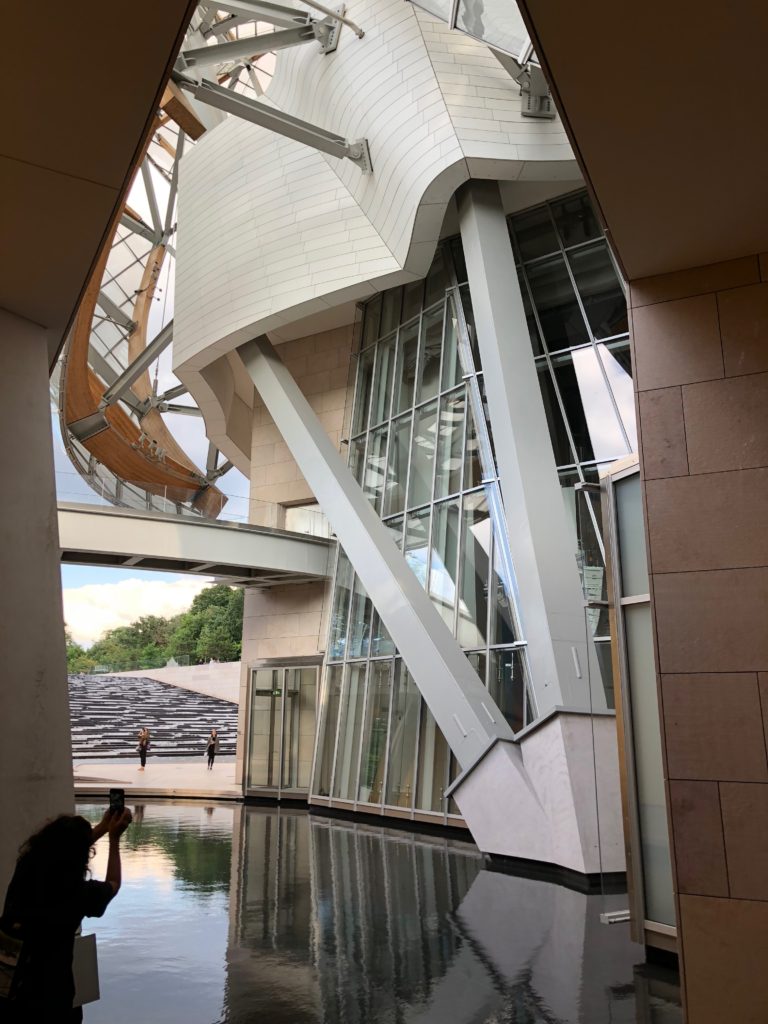
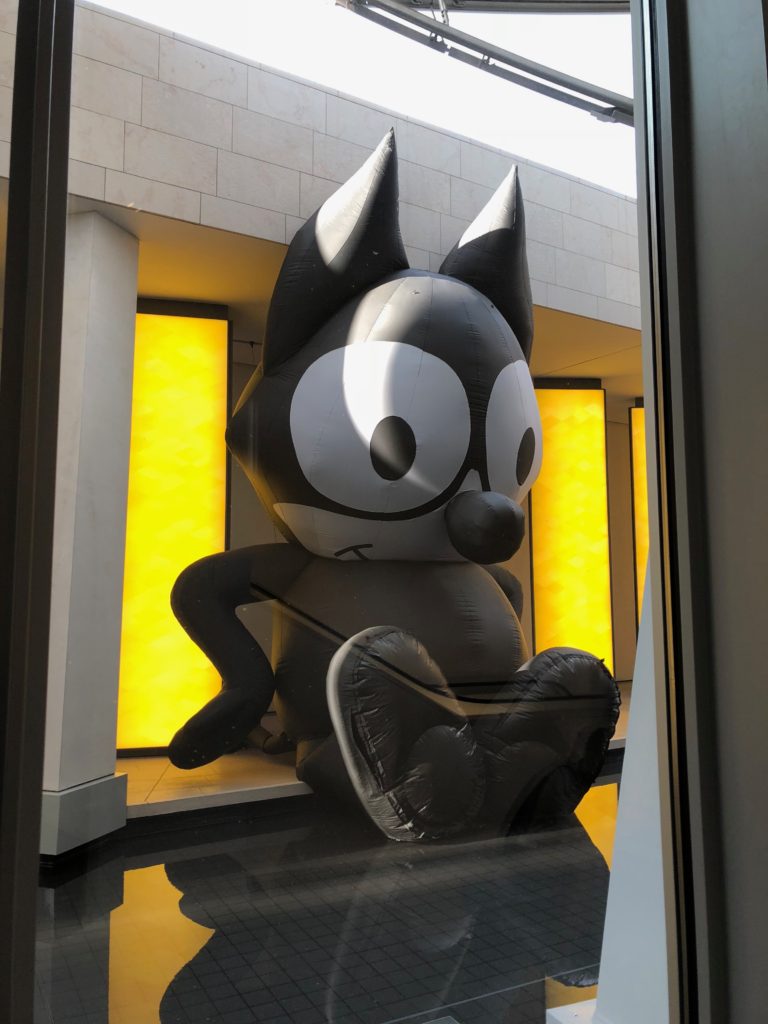
I ended my visit at the museum’s lower level, where a cascading waterfall trickles down into a surrounding reflecting pool. This level includes a large auditorium, as well as an outdoor terrace area, where I got a view of the steel columns that hold up the massive iceberg-like building.
All in all, the Louis Vuitton Foundation was simply stunning! It is one of the most upscale Frank Gehry buildings I have ever visited, and just like his others, it is fun to explore.
Sainte-Chapelle
The following morning, I went back into the city center. Although I was mainly focused on visiting modern buildings, I decided to also drop by one of Paris’s premier attractions: Sainte-Chapelle.
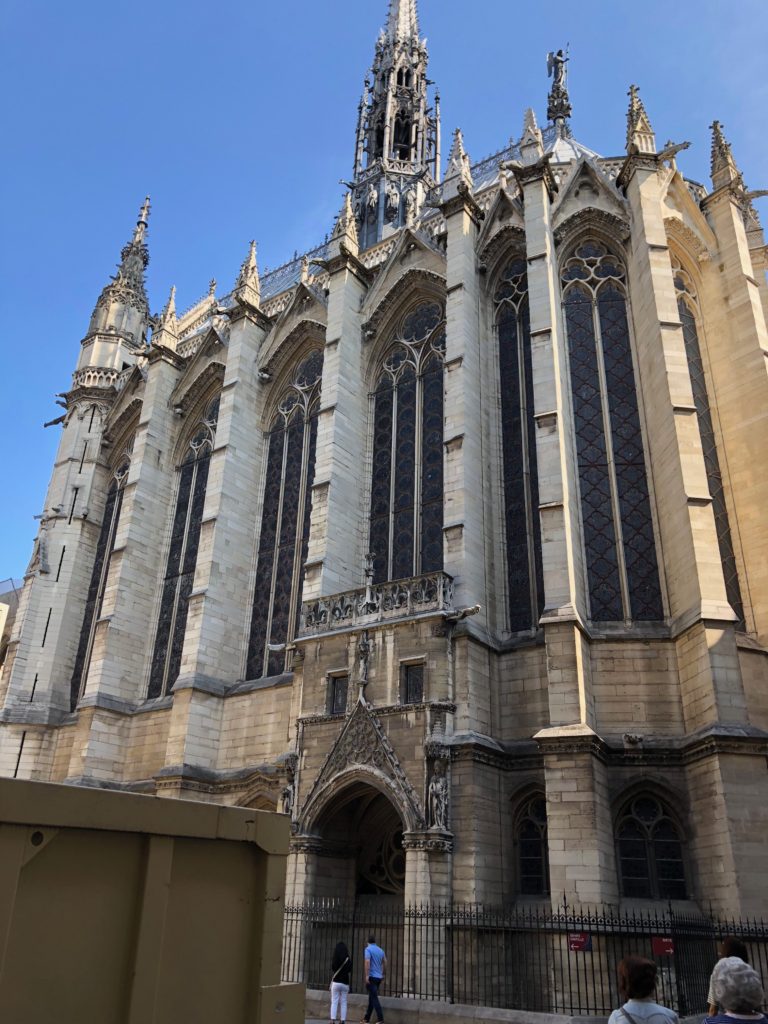
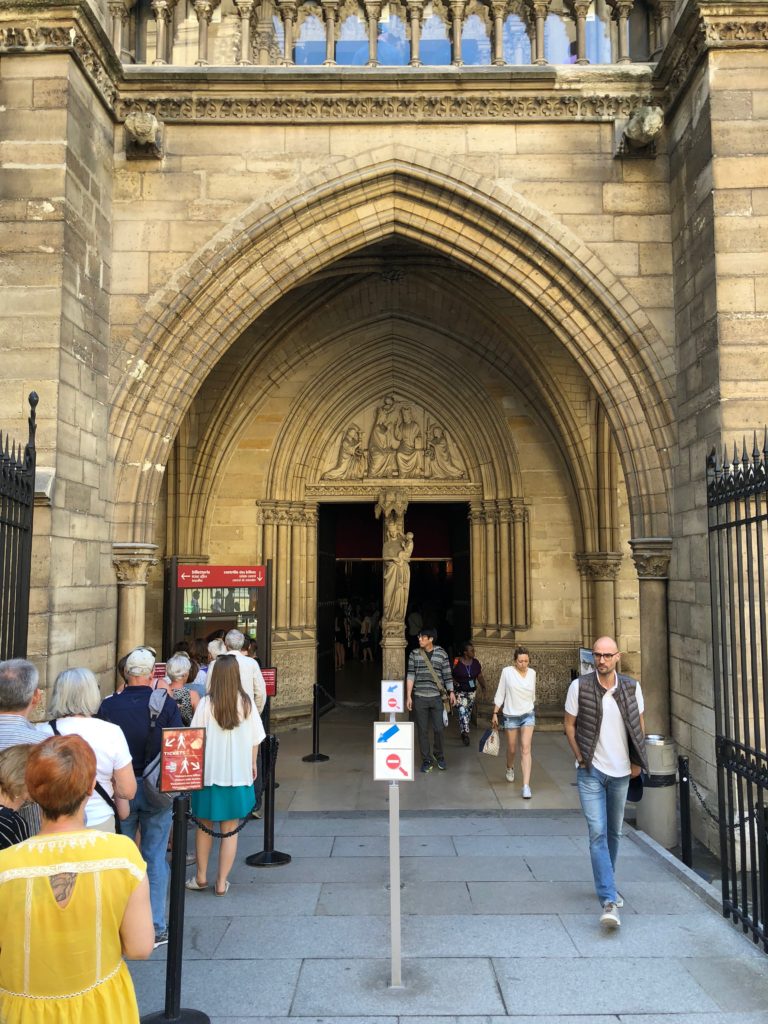
Although I had visited many of Paris’s traditional buildings, I never made it to this small Gothic chapel. Sainte-Chapelle is like the baby brother to Notre Dame and is a prime example of the Fench Gothic style known as Rayonnant. Outside, it features flying buttresses, ornamented pinnacles, and tall windows. The front entrance is richly carved, although not to the same degree as Notre Dame.
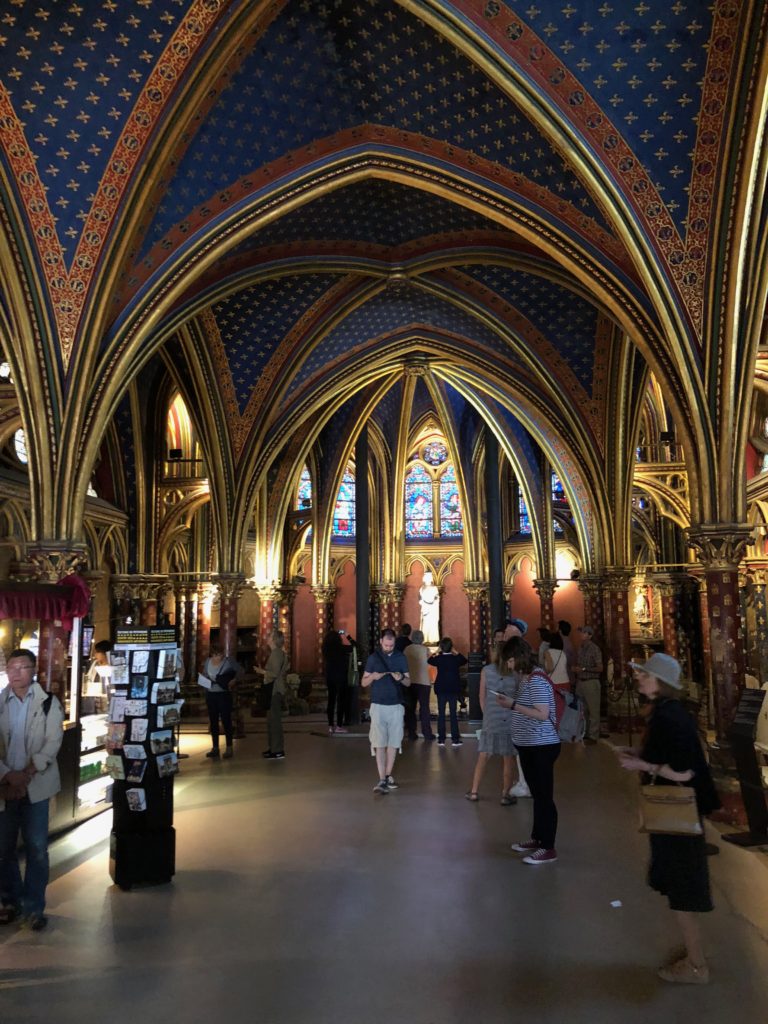
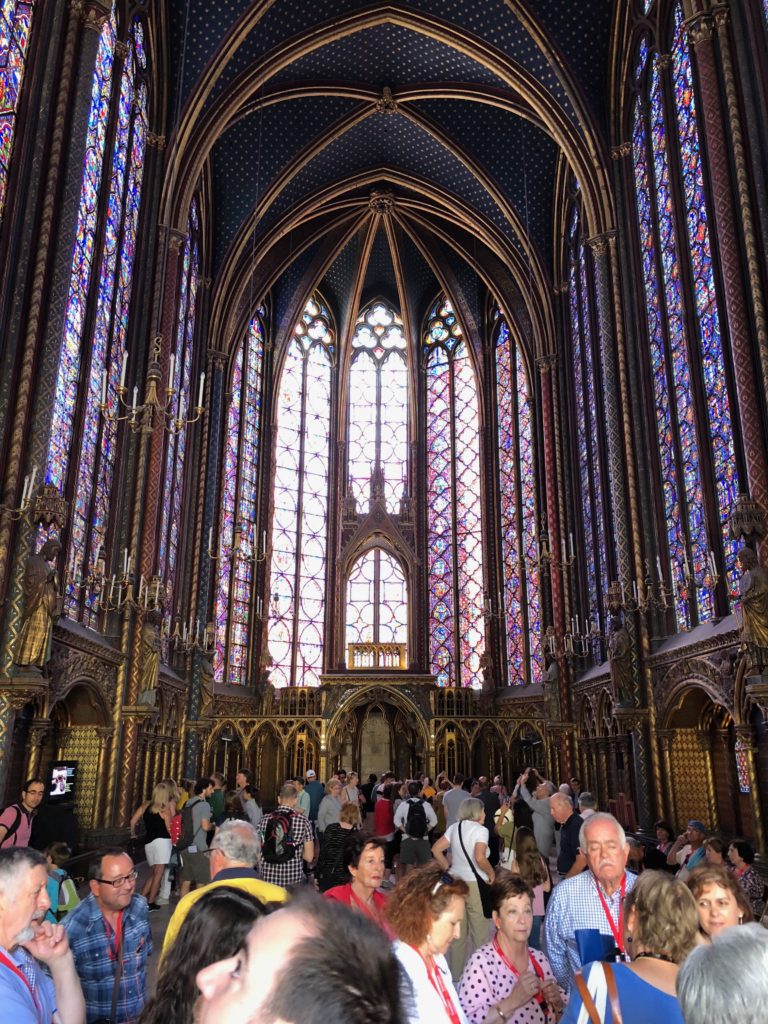
The interior contains two levels, which both feature Gothic-style rib vaulted ceilings. However, these vaults are richly painted in red, blue, and gold in contrast to other Gothic cathedrals. Upstairs, the church features some of the most beautiful stained glass that I have ever seen! The tall, thin windows are stained with rich colors and feature important religious scenes. The interior can get quite crowded, but it is well worth the stop.
Notre Dame
Since I was in the area, I paid a quick visit to my favorite building in the city: Notre Dame! I fell in love with this building when I first visited Paris in 2012 and referred to
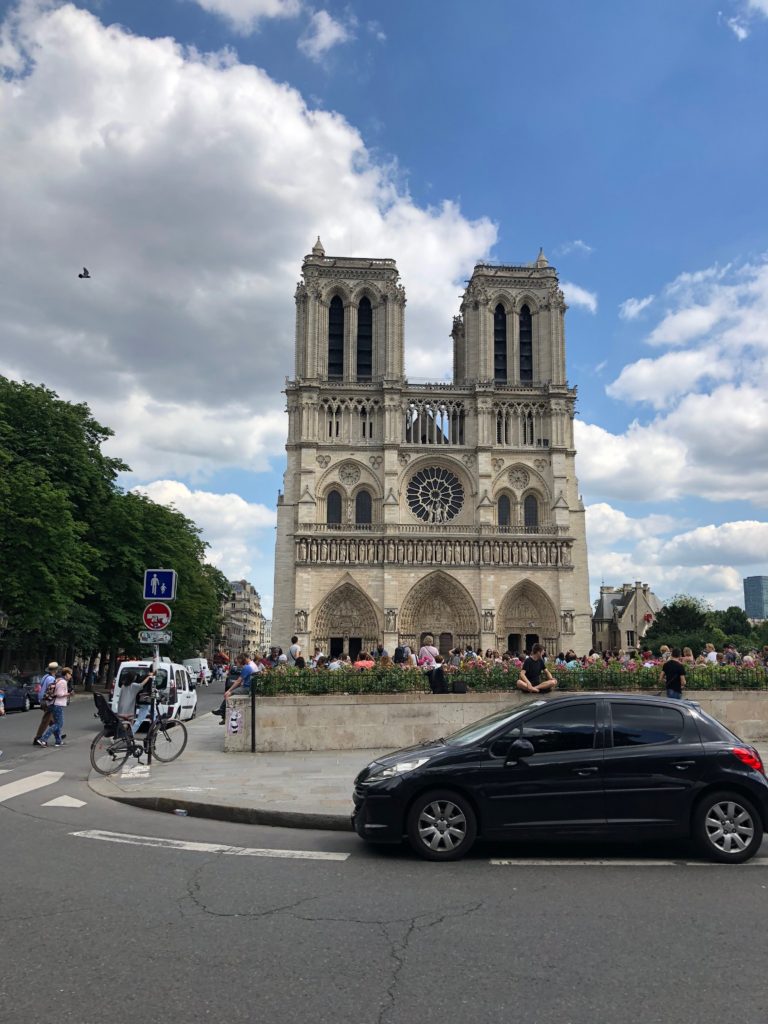
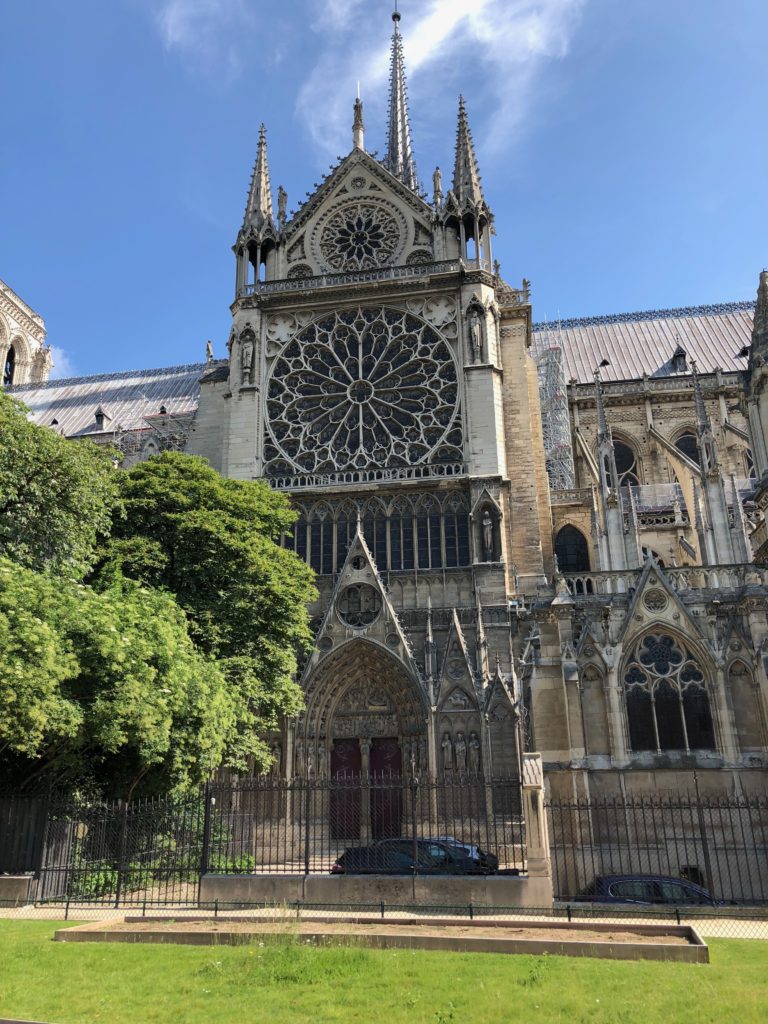
Notre Dame is another example of Rayonnant architecture, with large, flying buttresses that once supported an expansive wooden roof. The buttresses are important structural elements that allow the cathedral to boast its large stained glass windows. These photos were taken in May 2018. Sadly, the cathedral experienced a tragic fire on April 15th, 2019 that destroyed the entire roof and toppled the cathedral’s once tall spire. It was heartbreaking to see such a beautiful symbol of Paris on fire.
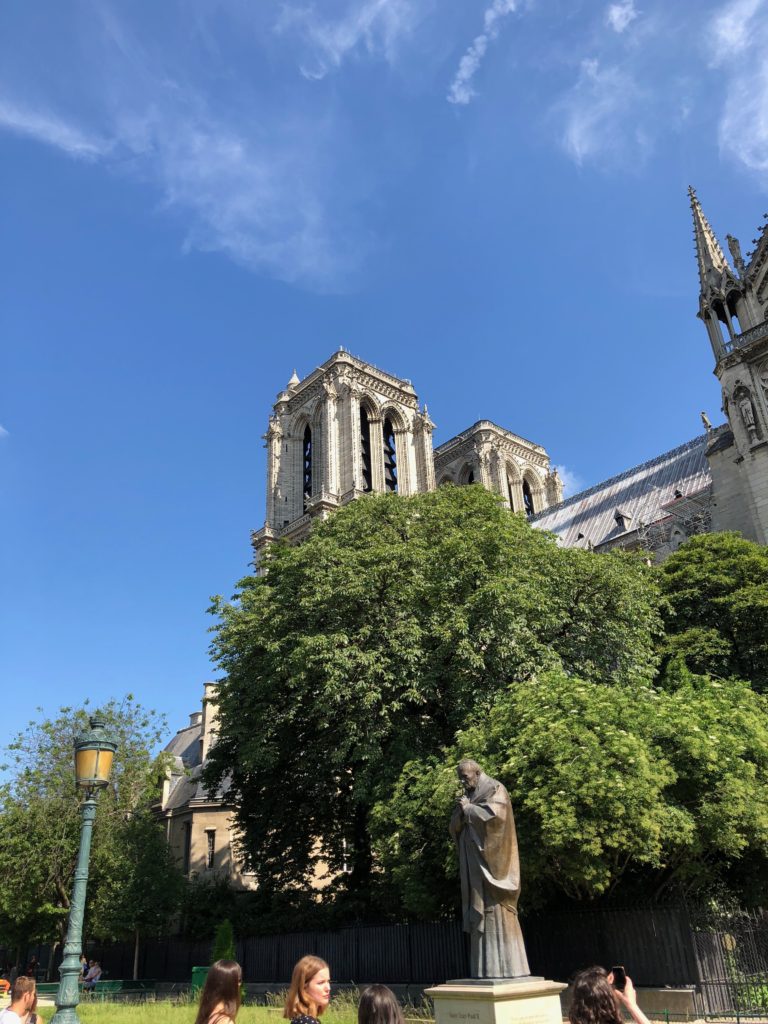
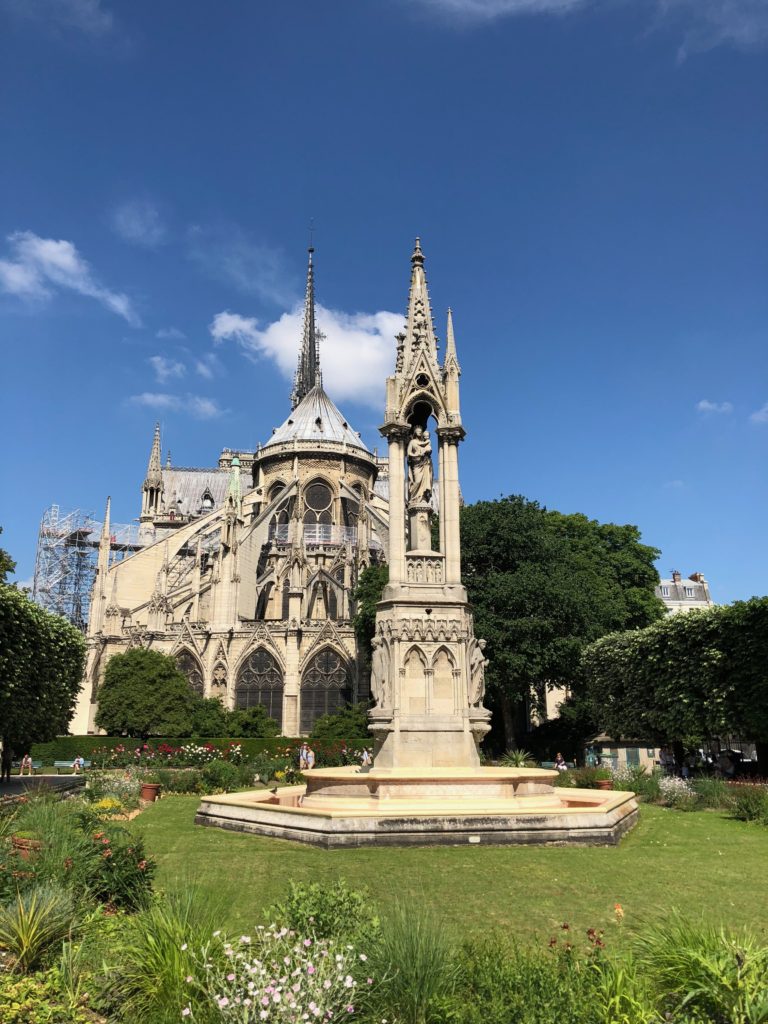
Thankfully, I got to enjoy my walk around the cathedral when I visited on this trip, admiring the beauty of its architectural elements from all angles. I took a stroll through the surrounding garden, which is located on the banks of the Seine River. From here, it was a short walk over to my final stop of the day before heading back to the U.S.
Arab World Institute
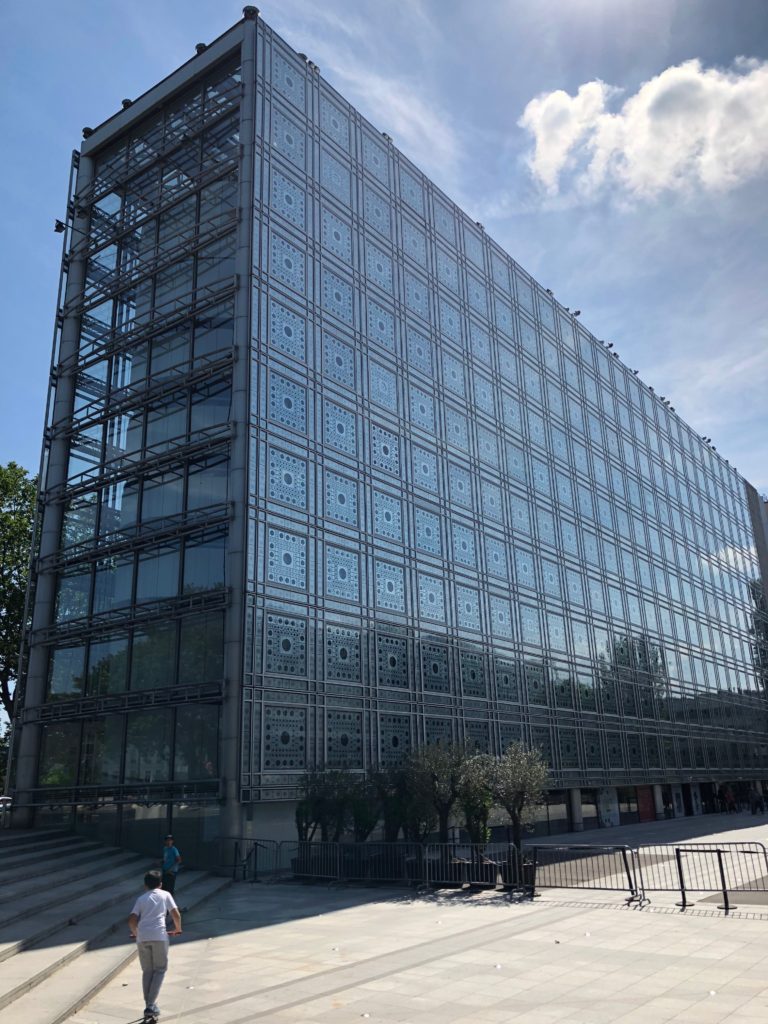
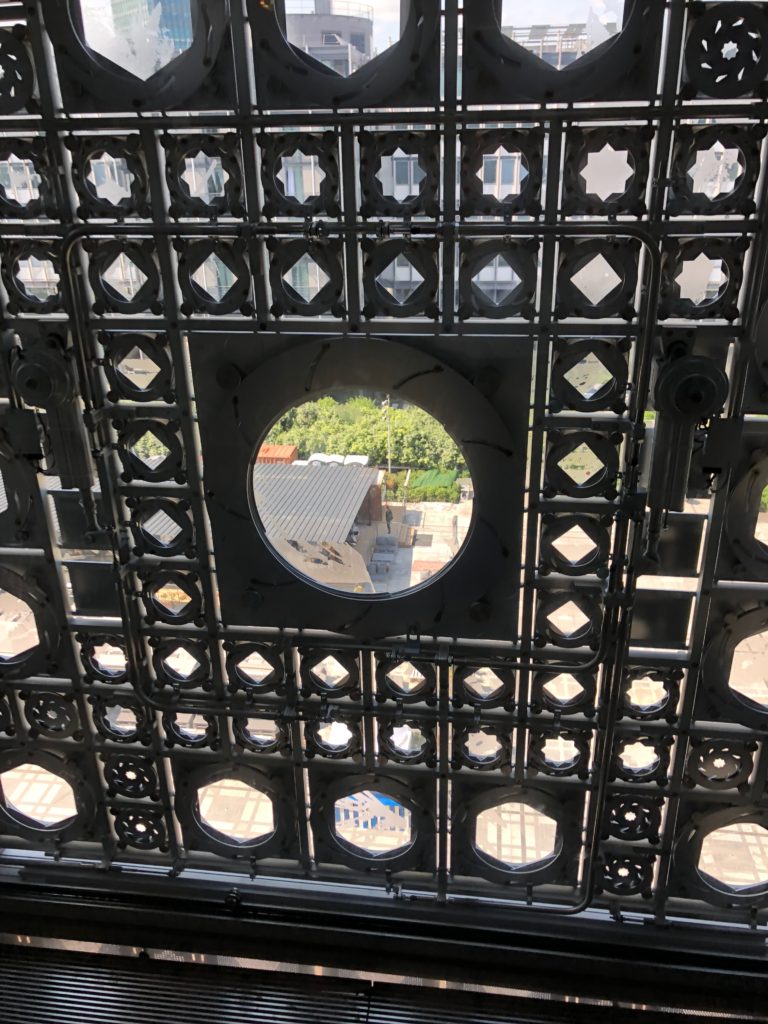
The Arab World Institute is another modern building in the city that I studied in history class. Designed by Jean Nouveau, it opened in 1987 as a cultural center to bridge the gap between Western and Arab culture in France. The building’s design was inspired by traditional Arab geometry and has a unique photoelectric shade system. The openings feature camera-like shutters that automatically adjust the amount of light entering the interior based on exterior sunlight.
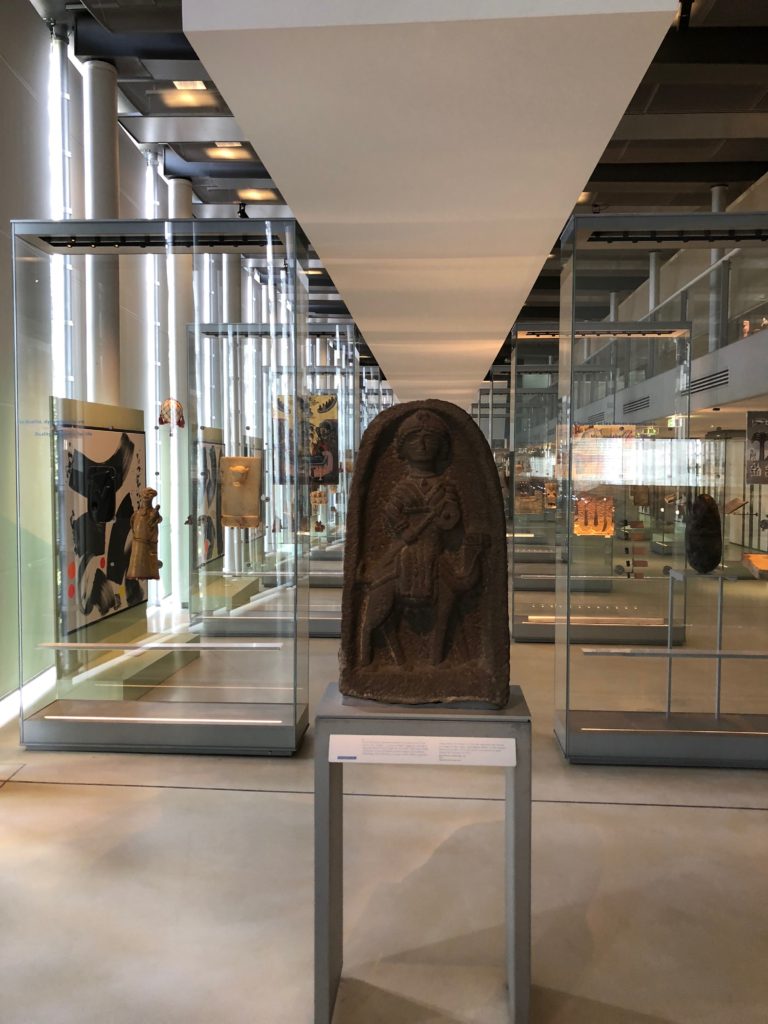
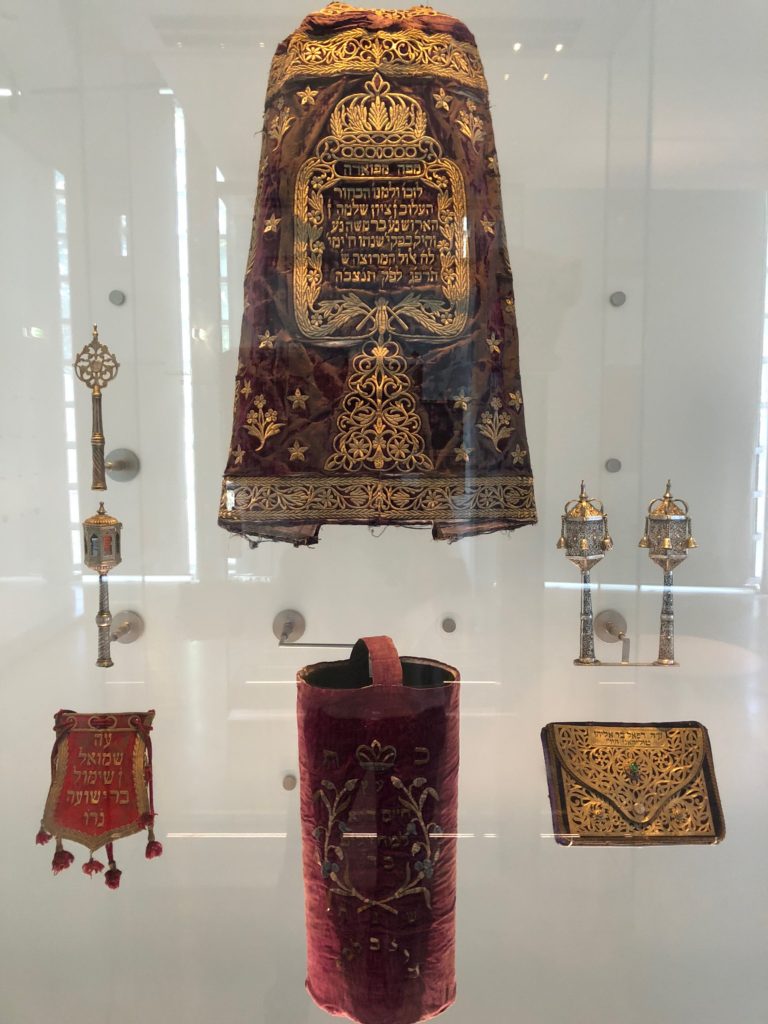
Inside, the floor-to-floor height is compact, and visitors walk through exposed metal hallways. The building houses a museum with a lovely collection of important Arab cultural objects. There is also a library, auditorium, and restaurant on site. After my visit to the museum, I headed back to Belleville to grab my bag.
Paris is a city that I love visiting over and over again. It is rich in history, beautiful architecture, and amazing food. Even for the short layover I had on this trip, I experienced new buildings while still visiting some of my favorite sites. I boarded a train at Châtelet station headed for Charles de Gaulle Airport. As I flew back to the states, I reflected on what was once again an eye-opening trip. I still had much more of Europe to explore, which would be saved for a future trip.

2irreverent
buy a paper https://term-paper-help.org/
custom college paper https://sociologypapershelp.com/
help paper https://uktermpaperwriters.com/
do my paper for money https://paperwritinghq.com/
paper writing services reviews https://writepapersformoney.com/
help with your paper https://write-my-paper-for-me.org/
help with writing a paper for college https://doyourpapersonline.com/
website that writes papers for you https://top100custompapernapkins.com/
online paper writer https://researchpaperswriting.org/
college paper writers https://cheapcustompaper.org/
write my college paper https://writingpaperservice.net/
need someone to write my paper for me https://mypaperwritinghelp.com/
scientific paper writing services https://writemypaperquick.com/
help with writing a paper for college https://essaybuypaper.com/
need help with paper https://papercranewritingservices.com/
write my apa paper https://premiumpapershelp.com/
write my papers discount code https://ypaywallpapers.com/
someone write my paper https://studentpaperhelp.com/
2exports
coursework https://brainycoursework.com/
custom coursework writing service https://courseworkninja.com/
coursework history https://writingacoursework.com/
online coursework https://mycourseworkhelp.net/
coursework questions https://courseworkdownloads.com/
buy coursework https://coursework-expert.com/
coursework on a resume https://buycoursework.org/
coursework history https://courseworkdomau.com/
japanese dating site https://freewebdating.net/
free dating apps no fees https://free-dating-sites-free-personals.com/
singles near me free https://onlinedatingsuccessguide.com/
skip the game dating site free search https://datingwebsiteshopper.com/
local single https://allaboutdatingsites.com/
free woman paid debit video https://freedatinglive.com/
free online chat and dating sites https://freewebdating.net/